GEORGE NEWS - Fifteen homeowners on Aldanah Security Estate in Pacaltsdorp, primarily from Phase 1, are ready to pursue legal action due to unresolved issues plaguing their homes and the estate.
These residents claim that, for over four years, they have been facing poor workmanship, including shoddy construction, cracks, mould, ceilings caving in, roof leakages, electrical and plumbing issues and faulty geyser installations voiding warranties.
They insist that the promised security - electric fencing and cameras - remains largely non-functional. "Unmaintained open fields, littered with debris and leftover building material, harbour snakes and rats. This poses health risks, especially for children playing unsafely in the rubble," said one of the complainants.
Despite repeated complaints to the homeowners' association (HOA), chaired by Steve Kleinhans, and the developer, Hamza Sharara, via managing agent Riaan Britz, no tangible solutions have emerged. "The expectation has been that we 'exercise a bit of patience'," reveals feedback from the homeowners. "Meetings with George Munici-pality's environmental health inspector - dating as far back as 2023 - and the National Home Builders Registration Council [NHBRC] yielded little results."
The Aldanah Action Group, led by Nara Madwanya, Lindi van Greunen and Ivo Geldenhuys, demands accountability, citing negligence and a developer-biased HOA constitution.
Frustrated by financial setbacks and ignored pleas, these home-owners are consulting attorneys and seeking a neutral structural engineer to assess their homes. They aim to challenge the developer and NHBRC legally, and are determined to restore safety, quality and pride in their estate.
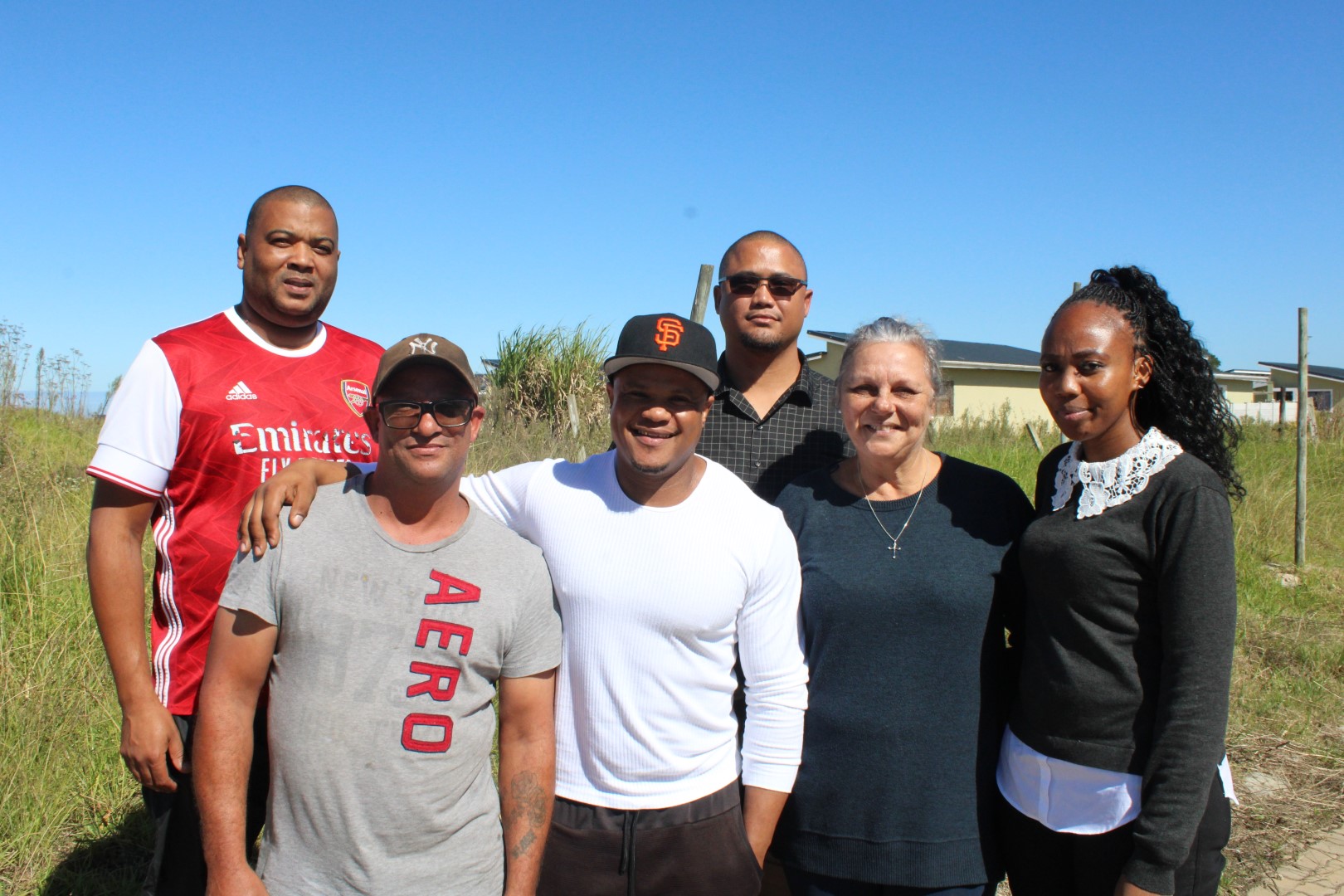
Building plans and the NHBRC
Madwanya said changes have been made to the building plans at will. "We bought according to a plan. The NHBRC admitted that some of the walls were not built according to specifications. He [the developer] is not being held accountable for anything."
Madwanya said the fact that the first 10 houses were built without any involvement nor intervention from the NHBRC, with late enrolments and late registration, proves there was negligence to a certain extent, and that the NHBRC did not follow due processes in the building and construction work at Aldanah Security Estate.
The action group suspects proper structural and building processes were not followed, especially when it comes to the specifications of the foundations on the houses.
Portia Sebulela, head of marketing, communications and stake-holder relations for the NHBRC, does not agree: "According to our records, two post-occupation complaints were lodged and underwent the NHBRC complaints and conciliations process, with no findings of structural failure," she said.
Asked why the developer was allowed to build up to roof height after late enrolment and registration of the first 10 houses were confirmed by a representative of the NHBRC, Sebulela said once a late enrolment is approved, the homebuilder is allowed to continue with the project.
Madwanya maintains that the action group had submitted multiple complaints to the NHBRC, both electronically and in person, but said that follow-ups by herself and Geldenhuys in 2024 revealed delays due to lapsed forms and staff changes, with no resolution despite legal assistance.
• George Municipality's senior communications officer, Ntobeko Mangqwengqwe, confirmed that the defects referred to in the homeowners' complaints are related to quality control of the building construction, which falls under the mandate and responsibility of the NHBRC, and not the municipality.
'This is how we have to live'
When George Herald spoke to Lindi van Greunen on 6 May, she said she was busy moving, since her living room and attic were sagging badly.
"The ceiling is clearly hanging lower at certain places than it should be," she said.
Homeowner Vernon Sparks said they still can't turn on the stove without getting shocked if they touch the nearby cupboard. "Our DB board is faulty, so that also makes the certificate invalid."
When the geyser burst in Trevor Apollis' house, the insurance company wouldn't pay out, saying it hadn't been installed correctly. "We had to get a lawyer to force the developer to pay for the labour. We also had waterpipes that burst inside the walls."
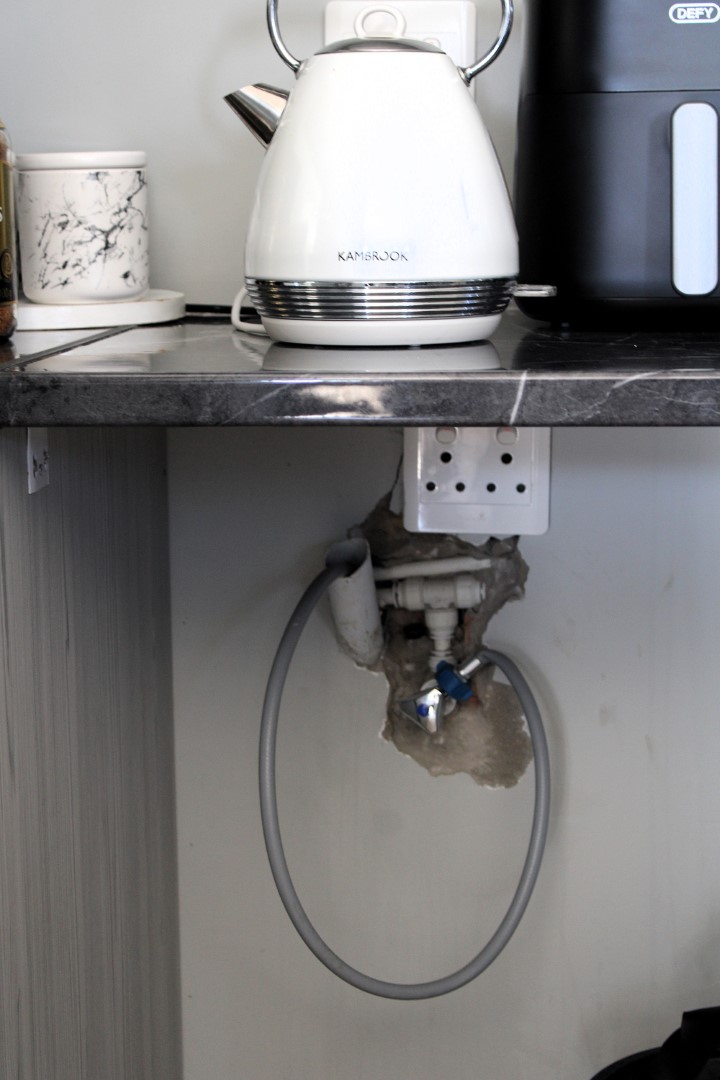
In Ivo Geldenhuys' house, a power cable was snapped in six places. "They tried to patch it in those places. I had to force them to put in a new cable," he said.
"My house was also built 10cm over the boundary line. The front of my house is also sinking. A milk can easily rolls from one side to the other, without help. Everywhere there is a plug, there are cracks in the wall. Holes are falling in my garage floor. I am convinced there is too much building sand in the foundation."
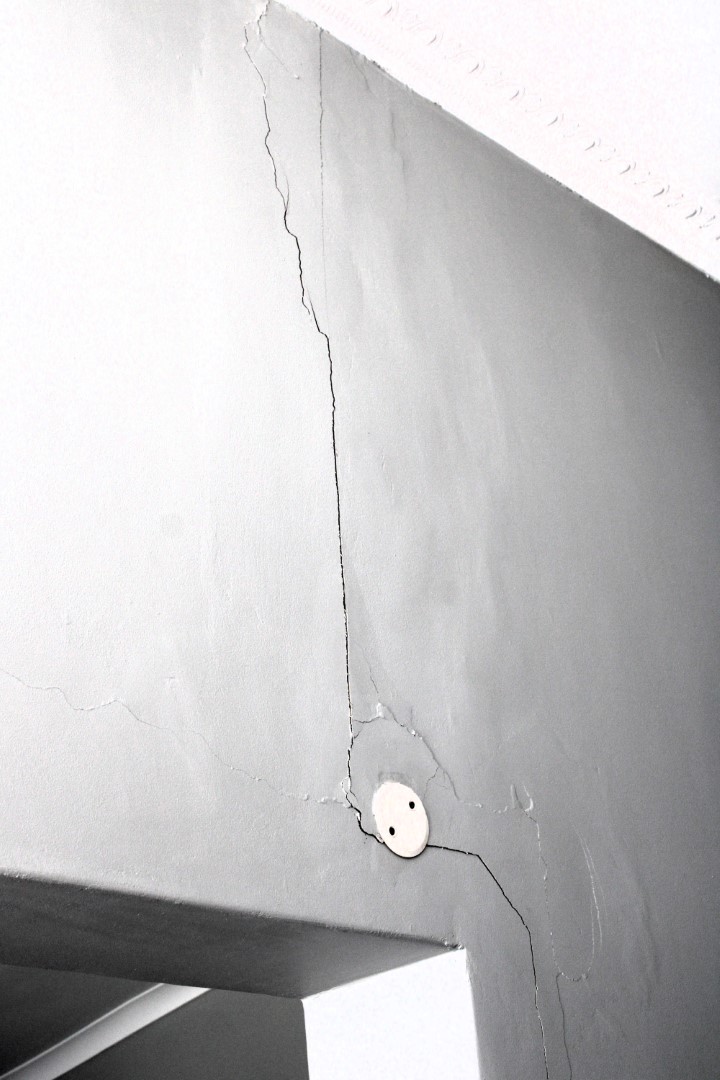
In front of Clive Roman's driveway is an electricity distribution box. "I cannot drive into my own driveway. The building plan shows that the power box is in a different location," said Roman. "The house is also tilted, unlike what is shown on the plan."
All the residents George Herald spoke to said their sliding doors don't fit in their frames properly, and that their homes are permanently covered in dust.
Nara Madwanya has been billed for water for years, without having a water meter at her home. It took an investigation from George Municipality to reveal that her water meter was indeed underground.
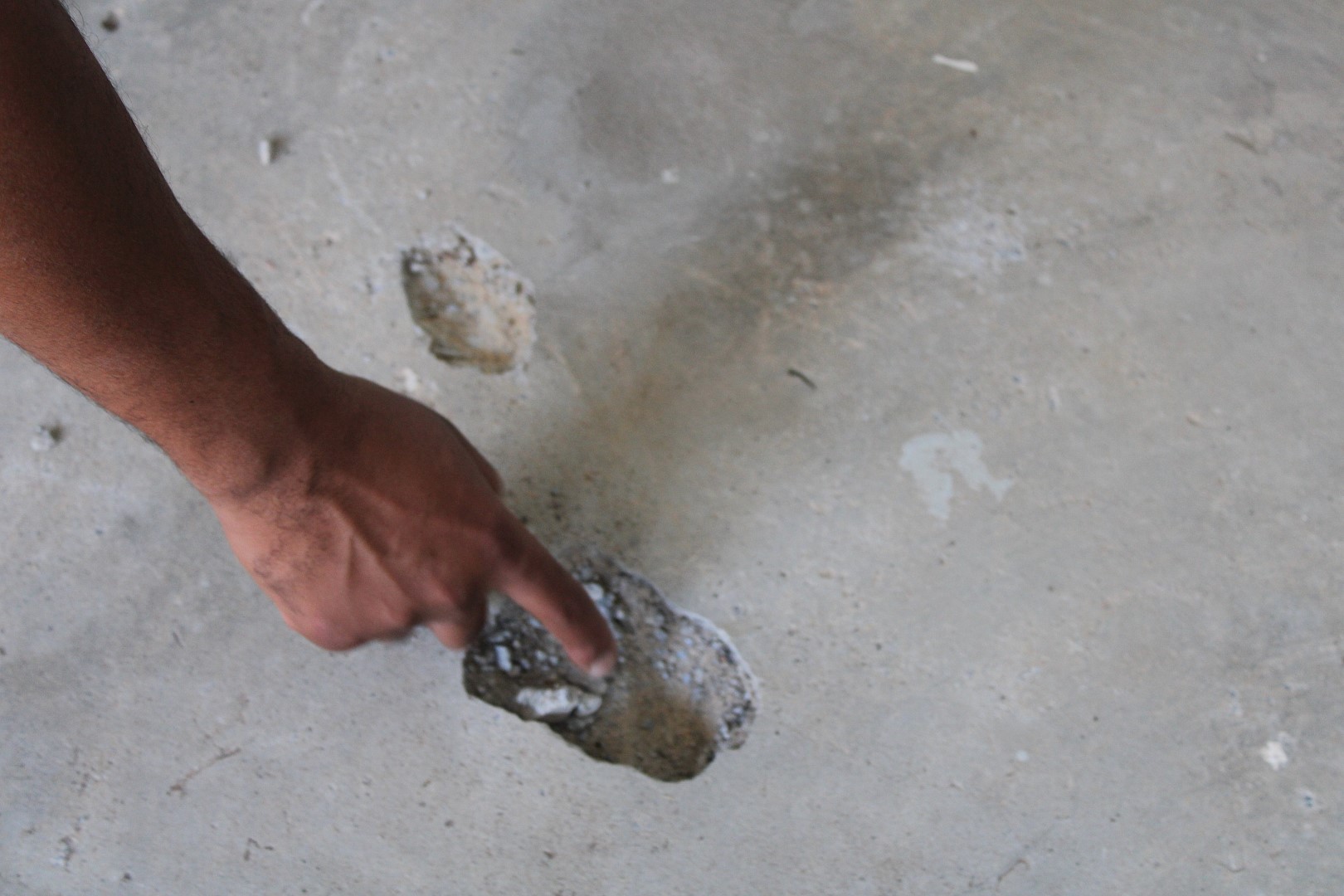
Senior communications officer Ntobeko Mangqwengqwe confirmed that during an inspection at the premises, the client's water meter was found to have been installed underground by the contractor appointed by the estate developer.
"As per municipal requirements, all water meters must be accessible to allow for regular readings for billing purposes. A meter installed underground cannot be read. The meter in question has since been relocated to a more suitable, accessible position," said Mangqwengqwe.
Madwanya said the homeowners are not being protected by the HOA. "We all have the same problems, yet we are being told the HOA meetings are not 'complaint sessions'. Who is going to buy our homes? My house has been in the market for 18 months!"
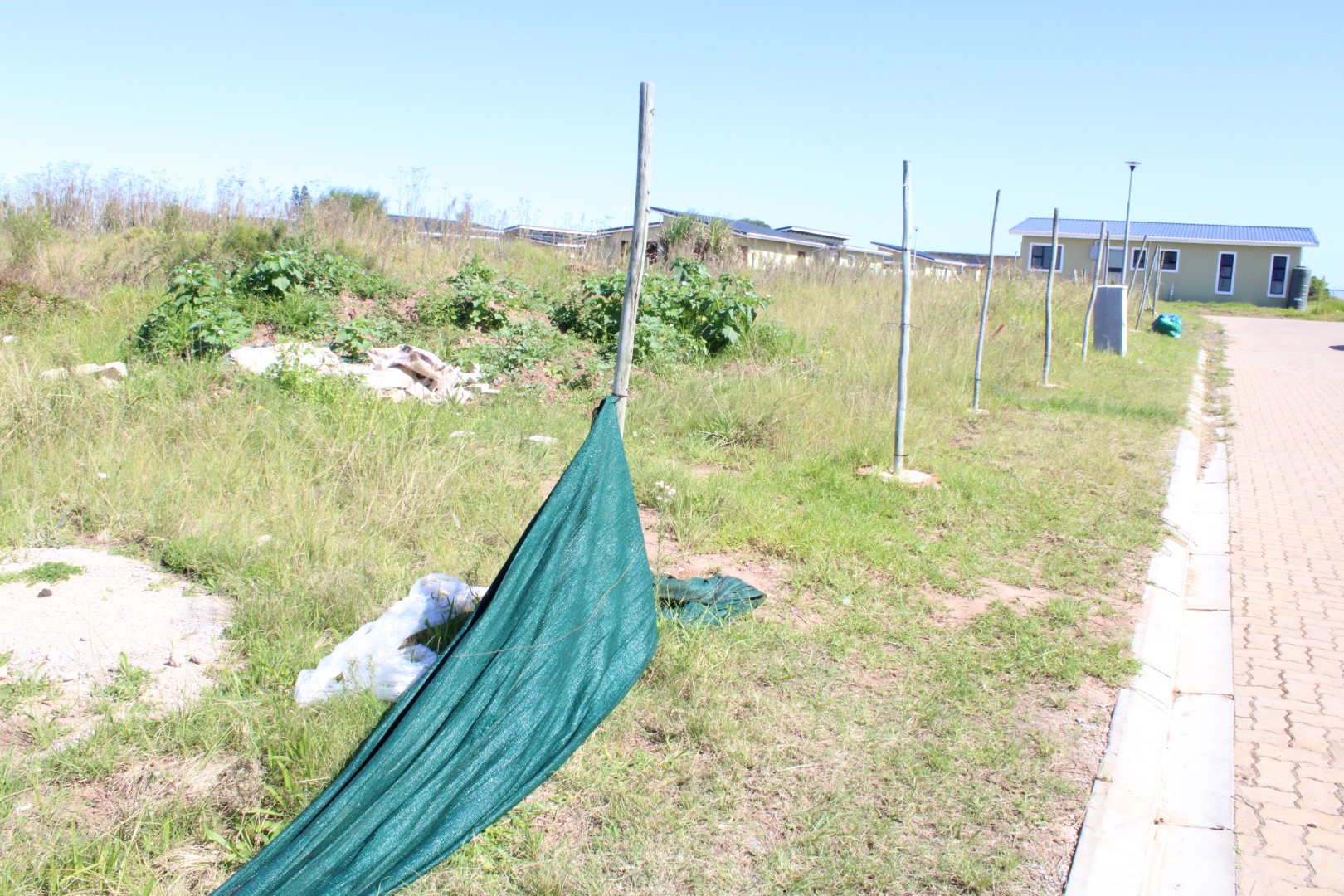
Developer defends his turf
The developer of Aldanah Security State, Hamza Sharara, invited George Herald for an interview at the premises on 6 May.
He stressed that the homeowners should take responsibility for their own maintenance of their properties, saying their houses were an excellent investment and could be sold for a lot more than the initial purchase price.
Sharara said he would extend his offer to buy these homes back for the purchase price. "If you are not happy, please come to me, I will give you your money back," he said.
Sharara said to date, no one has taken him up on this offer because they bought a good investment. He said the houses were not being properly maintained, and that the homeowners want to place all responsibility on the developer.
Sharara addressed many of the complaints as lodged by the action group. According to him, the houses are structurally sound and have all been built according to the plans, perfectly resembling the show house. He said one of the homeowners had asked for changes with an island in the kitchen, after which everybody wanted that too. "So we did it for them," he said. "They wanted something else."
He said he only uses accredited electricians and craftsmen.
Commenting on Clive Roman's electricity distribution box situated in his driveway, Sharara said the house was built according to the plan, and that there was no mistake. "He [Clive] wanted his driveway straight, but he signed off on the plan with his driveway coming in skew. After he moved to the house, he now has problems."
Sharara claims Roman had withheld money from the developer, saying his house was not built on the right place, but the bank who financed his purchase is content with the plans. Sharara alleges that Roman is currently using some of his [the developer's] property for a different entrance to his home.
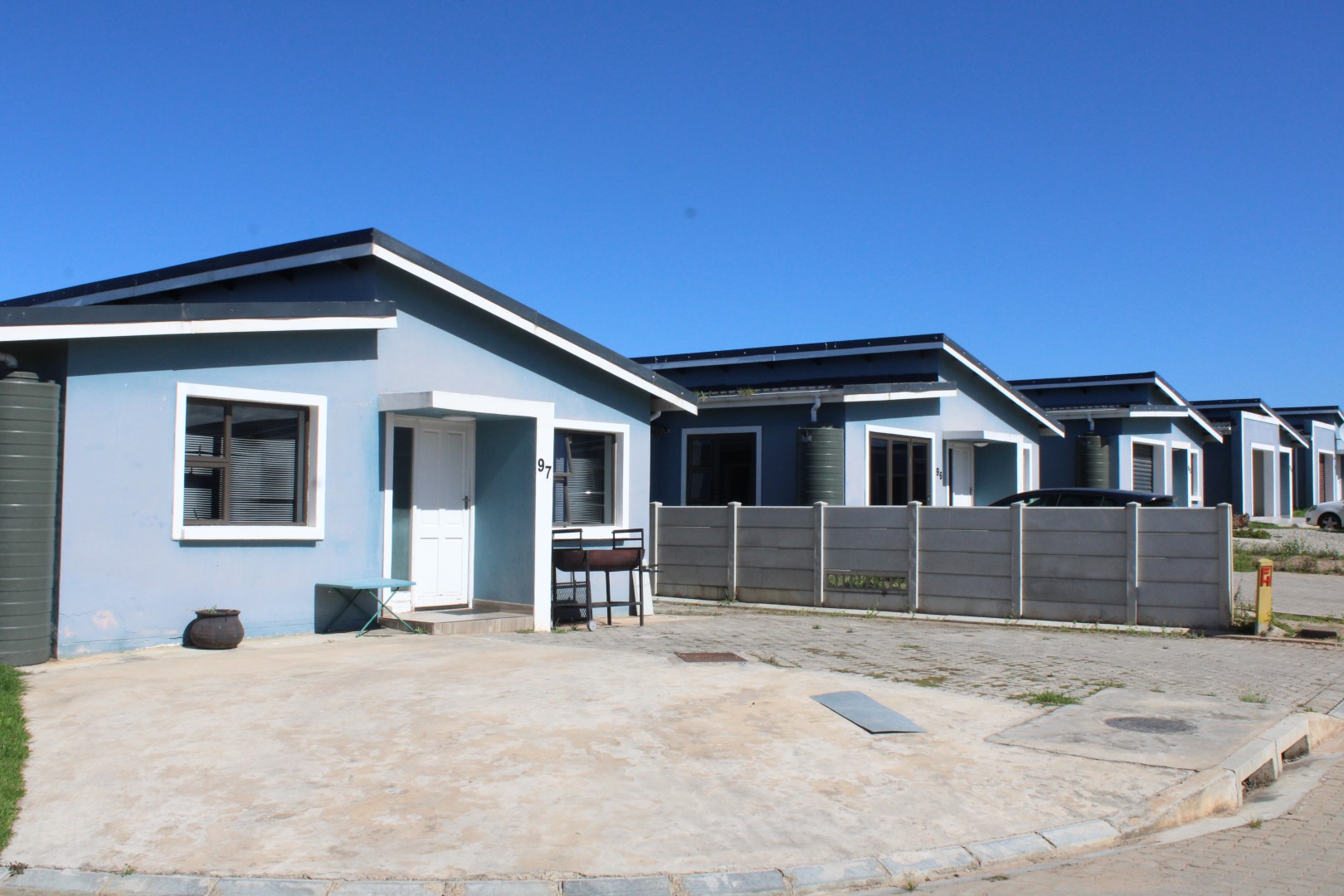
He said paving around the houses was never included in the contracts, and that it was up to the owners to pave their premises.
Addressing Madwanya's complaint about the underground water meter, Sharara said he believes it might have been buried by a gardener.
In addition, he said because the home-owners don't do proper maintenance to their properties, this is one of the reasons why the electric fence is frequently out of order. Sharara said they don't keep their gardens neat, and that has an effect on the fence's functionality.
Commenting on a situation in which two bicycles were stolen, Sharara said the problem is not with their security, but that residents' visitors steal from them. "We don't see the visitors in the cars," he said. "They steal from each other. I have nothing to do with it."
Sharara said he is very upset with the fact that several homeowners are now refusing to pay their levies, which is approximately R400 per month. He said they should pay them if they want services, but the members of the action group refuse to do so unless they get the service they demand.
Agent caught between a rock and a hard place
Riaan Britz, managing agent and advisor to the trustees, said he finds it very difficult to comment without stepping on toes.
He said the developer needed his help to understand the complex's constitution and architectural guidelines and rules. "I've pointed out the errors in them, which he would then have corrected, but that was never done," said Britz.
"The developer does not maintain the undeveloped parts and parts where construction work is in progress. I have already heard that clean-up work is being done from the homeowners' association's funds, which is not the HOA's job."
Britz said when a complex is built, the complex is the responsibility of the developer, and only when the complex is completed, the developer hands over the complex to the HOA.
"Until then, the development's constitution states that five trustees must be appointed, two from the homeowners in the complex and three by the developer. The developer [Hamza] has appointed his receptionist, who has no decision-making power, and his son as trustees. His son has not yet attended any trustee meeting. Hamza himself is the third trustee. The owner-trustees are Steve Kleinhans and Tarryn Manchest. Unfortunately, the two of them cannot veto the developer, because it is two to three."
Britz said the complex was planned to be a three- to five-year project. "However, it is selling so slowly that it looks like it will be a 50-year project. It seems to me as if the developer has run out of funds."
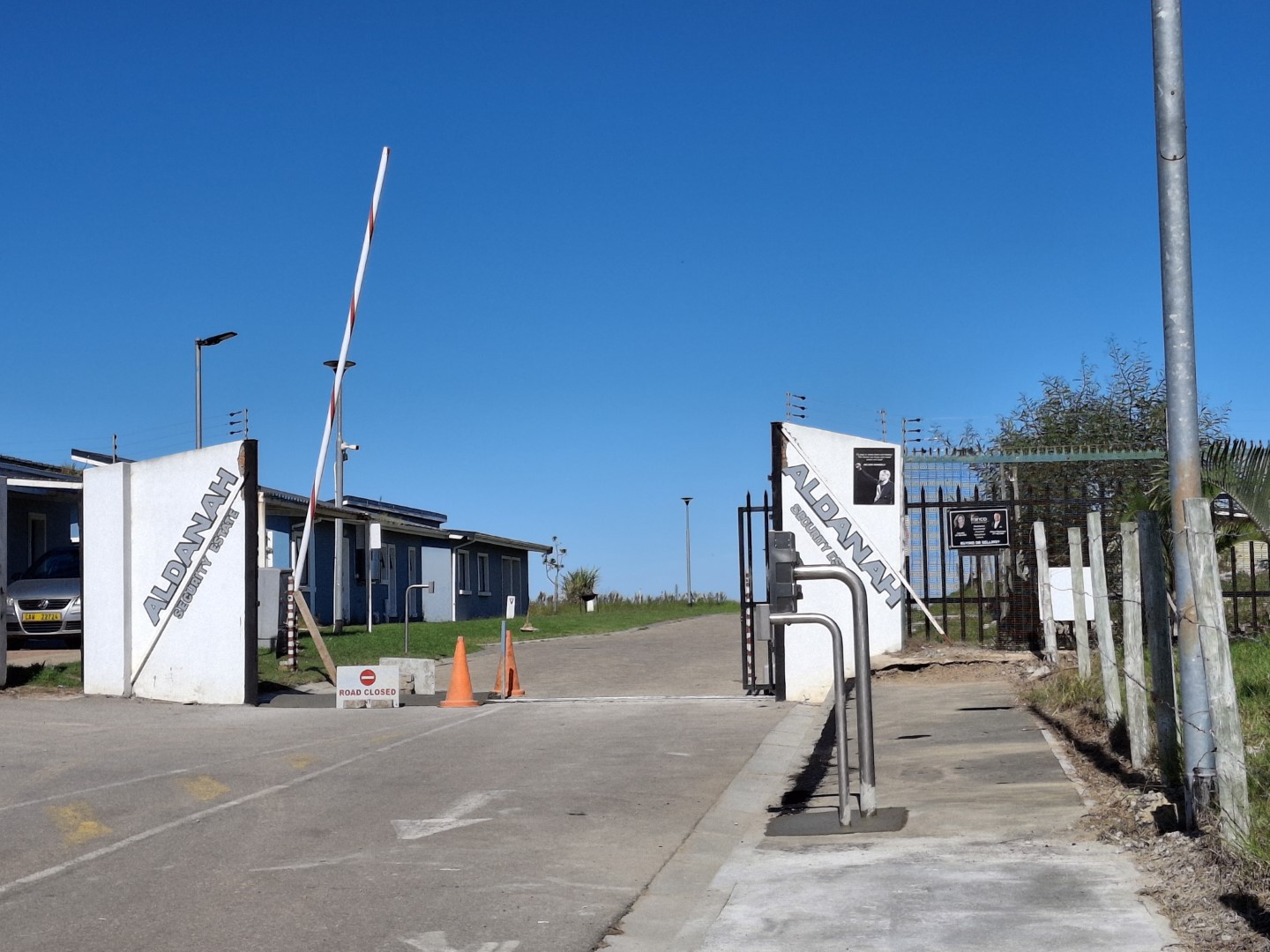 The managing agent said there is currently almost R50 000 in outstanding levies, which the residents refuse to pay due to complaints that the developer does not address. Photo: Michelle Pienaar
The managing agent said there is currently almost R50 000 in outstanding levies, which the residents refuse to pay due to complaints that the developer does not address. Photo: Michelle Pienaar
Levies
Britz said there is currently almost R50 000 in outstanding levies, which the residents refuse to pay due to complaints that the developer does not address. "I must now have the guilty homeowners who do not pay their levy sued … while I very much understand their desperation," said Britz.
"Unfortunately, according to the constitution, they are not allowed to withhold levies because the developer does not do his part. This puts the HOA's finances under pressure, and improvements cannot be made, which is actually the developer's responsibility.
"Incidentally, levies are only R400 per month per house. There are currently 37 homeowners, so that is R14 800 in levy income, of which R10 000 goes to security and R1 800 to cut grass per month. According to the constitution, the books must be audited annually, so when the payment is made, there is no money left. Now a lot of them do not pay their levies and put pressure on the wrong party."
The HOA's chairperson, Steve Kleinhans, said he moved in last year and is a homeowner himself. "I try to help with all these issues, but it is difficult," he said.
 Britz said there is currently almost R50 000 in outstanding levies, which the residents refuse to pay, due to complaints that the developer does not address. Photo: Michelle Pienaar
Britz said there is currently almost R50 000 in outstanding levies, which the residents refuse to pay, due to complaints that the developer does not address. Photo: Michelle Pienaar
What can homeowners do when they’ve been given a substandard house?
As a regulator of the homebuilding industry, the NHBRC is mandated to protect the interests of the housing consumer while regulating the homebuilding industry.
Accordingly, homebuilders and developers are legally required to register with the NHBRC and enrol every homebuilding project they undertake. All new homes, including those in security estates, must be enrolled by the builder and inspected by the NHBRC for compliance with the prescribed building standards.
The NHBRC helped with the following information on what homeowners can do when they realise their newly built home is substandard:
• Notify the homebuilder in writing of all complaints requiring attention within a reasonable time
• Keep a copy of all correspondence between themselves and the homebuilder
• Allow the homebuilder reasonable access to the property in order to fix the defects and
• Ensure that all financial obligations to the homebuilder are met.
Thereafter, the homeowner may escalate their complaint to the NHBRC if any of the following conditions apply:
• the homebuilder does not respond within the period specified
• the homebuilder fails to honour their obligations, and
• there is an unresolved dispute between the homeowner and the homebuilder regarding the extent of the homebuilder’s liability.
Homebuilder response times are as follows:
• Three-month non-compliance: 21 working days
• One-year roof leak: Seven working days
• Five-year major structural defect: Seven working days.
Points to remember
An NHBRC-registered developer/homebuilder is certified to meet the prescribed industry standards in terms of technical competence, construction experience and financial capability.
The enrolment of the housing project allows the NHBRC to conduct quality inspections on all new homes during the various stages of construction to circumvent structural failure.
An enrolled home offers the homeowner the warranty cover for up to five years from the date of occupation for minor defects (identified within 90 days of occupation), roof leaks (identified within one year from date of occupation) and major structural defects (identified within five years from date of occupation).
‘We bring you the latest Garden Route, Hessequa, Karoo news’
















